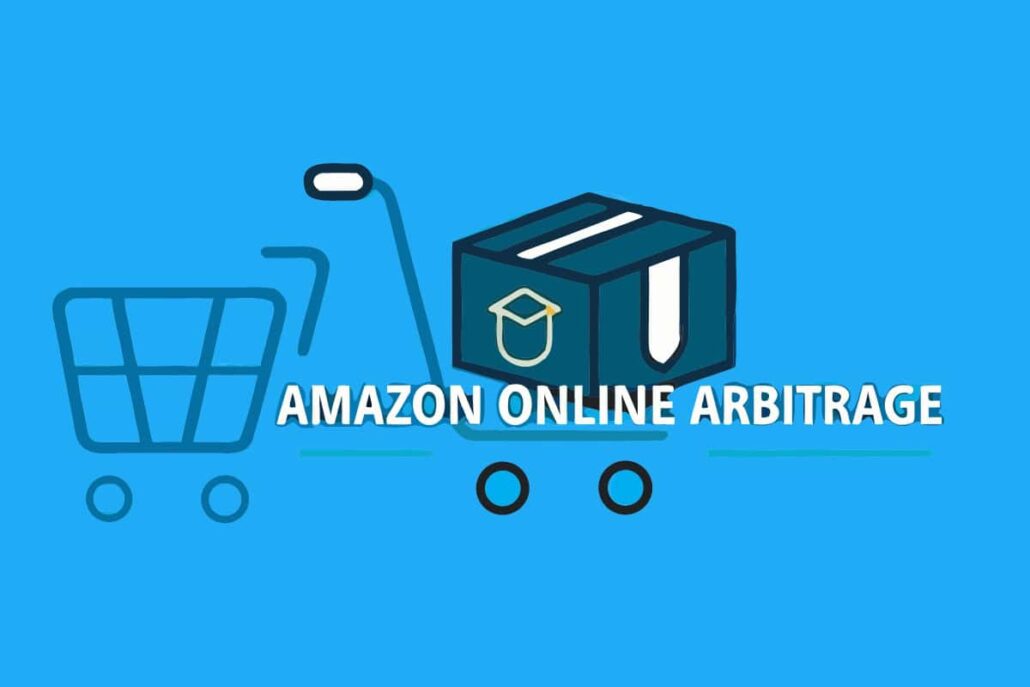
Online arbitrage has changed the e-commerce game by letting everyday people sell on Amazon without building products from scratch or stocking a garage full of inventory. Instead, you hunt for deals on other websites, buy those items at a discount, and then relist them on Amazon for a higher price.
In this guide, well show you step-by-step how to find winning products, steer clear of rookie mistakes, and set up a business that pays you month after month.
What is Amazon Online Arbitrage?
At its core, Amazon online arbitrage means grabbing items from one online store when theyre cheap and flipping them on Amazons site for a tidy profit. Unlike retail arbitrage, where you dart between brick-and-mortar shops, everything happens right from your laptop or phone.
The magic lies in the price gap between websites. If a gadget costs $15 on a clearance page but sells for $30 on Amazon, thats your opening. After you pay shipping and cover Amazons fees, the difference is your earnings.
This model attracts new business owners because it needs very little cash up front and can run from any place with Wi-Fi. You skip the headaches of building things, overseeing factories, or piecing together a complicated supply chain.
How Online Arbitrage Works
The online-arbitrage journey follows a step-by-step plan the best sellers repeat day in and day out.
Product Research and Analysis
Your first job is spotting items that have a big price gap you can fill. That means juggling dozens of websites, from clearance aisles to flash-sale pages, and checking every cool deal. Along the way, you track the current Amazon price, how fast the item sells, who else is listing it, and whether holidays or seasons will boost or slow sales.
Good research is more than side-by-side numbers. You also check Amazon’s Best Sellers Rank, or BSR, which shows how often a product actually leaves warehouses. An item with a BSR below 100,000 in most categories usually flies off shelves, while a higher rank hints at a much calmer sales pace.
Sourcing and Purchasing
After sniffing out a winner, you buy the stock straight from the original retailer. That could mean snagging end-of-season gear, popping into a big-box store during a one-day sale, or browsing niche discount sites. Many seasoned sellers even befriend store managers or set alerts so they hear first about the deepest price cuts.
Smart sourcing starts with knowing minimum order quantities, shipping costs, and how long it takes to get products to your warehouse. Each of these details can change your profit margin and cash flow faster than you might think.
Listing and Selling on Amazon
Once the stock arrives, you either set up new Amazon listings or add the products to pages that are already live. Its an everyday task yet also a creative one, because you need an attention-grabbing title, clear and appealing photos, and a price that stays competitive. Above all, the entire listing has to follow Amazons rules and honestly show what the item is and how it works.
Many online-arbitrage sellers choose Amazons FBA (Fulfillment by Amazon) service. With FBA, Amazon takes care of storage, packaging, and shipping, so you can spend less time on logistics and more time scouting your next winning product. Plus, FBA sellers- get the badge that signals Prime shipping, which usually boosts sales.
Finding Profitable Products
Your success in online arbitrage hinges on finding products that are actually profitable, again and again. That ability blends strategic thinking with practical tools, and luckily, both are now easier to access than ever.
Research Tools and Software
Most serious sellers count on software to make research quicker and smarter. Keepa, for instance, tracks Amazon price history and shows how frequently an item is marked down or out of stock, data that reveals pricing trends and competition level. OAXray and Tactical Arbitrage cast a wide net, scanning thousands of pages at major retailers and flagging potential wins for you, often in minutes.
These tools spit out key numbers-profit estimates, likely sales volume, past high and low prices-and that information is worth its weight in saved hours. Yes, they usually charge a monthly fee, but that cost is small compared to the time and headaches they cut.
Profitable Product Categories
Some product types nearly always open better arbitrage doors than others. Cell-phone chargers, outdoor string lights, building-block sets, and over-the-counter vitamins frequently mismatch in price across websites. These categories usually enjoy steady season-long demand and keep profit margins in the safe zone.
Seasonal goods can also shine, yet they need sharp timing. Christmas ornaments, pool floats, and fall-back-to-school kits dust off quick late summer, leaving shelf prices out of whack.
Analyzing Competition and Demand
Study the competition before buying deeper. Listings swarming with sellers often slide into price wars, slicing margins fast. Aim for moderate rivals and steady-cart pullers.
Amazon’s own numbers tell the rest. Year-round bestsellers promise steadier cash flow than flashy one-hit wonders. Still, that pop seasonal stock can bring sweeter cut at peak.
Legal and Ethical Considerations
Arbitrage is legal, yet savvy sellers know where red tape hides.
Amazon’s Terms of Service let you buy from stores and resell, as long as products are real, conditions match what you list, and seller scores stay high.
Many national-brand holders limit where their items can be sold online, and some insist sellers get approval before posting listings. Because jumping into a new line without checking can tie up a lot of money, always research these rules early.
No seller ever wants to find counterfeit products in their own store, yet thats exactly what will damage a reputation and a seller account. Misdescribing an item condition works just as quickly. Because of those big risks, only purchase stock from trusted suppliers and keep the receipts and invoices handy in case questions pop up later.
Sales from online arbitrage count as income, so governments expect to see clear records and an honest tax return. That means keeping a log of purchases and expenses, figuring profits, then filing on time. If numbers make your head spin, reach out to a local accountant who knows e-commerce law.
Profitable arbitrage doesnt happen on pure luck; it grows out of habit, routine, and a careful plan. Start by setting set research times, snagging alerts that track price dips, and recording everything in one place. Charts, computerized reports, or simple spreadsheets all work-simplicity just matters most.
By studying the numbers regularly, youll spot the categories that bring home the biggest margins and the sour investments that need to go.
Managing Cash Flow
When you buy products for online arbitrage, the money sits on your shelves until they sell. Because of that, keeping a close eye on cash flow is vital. You want enough leftover capital to snap up new stock while also waiting for sales to pay you back. Most successful sellers turn their profits straight back into new purchases, slowly growing their buying power over time.
A smart way to start is by testing with smaller batches. This way, you see what moves fast and what sits, all without risking your entire budget. As you get comfortable reading keep and build products, you can slowly pour in more money with greater confidence.
Scaling Your Operations
Once you know the game-and have some extra cash-you can widen your product range, explore new stores, or buy sharper research tools. Plenty of sellers end up hiring virtual assistants to cover the daily grind, such as scanning for deals or polishing listings.
Just remember that growth shouldnt mean losing quality. Set up checklists, automation, and clear guidelines so your team-and you-can handle more orders without turning customers away.
Common Challenges and Solutions
Like any side gig, online arbitrage comes with its own headaches.
Competition and Market Saturation
Hot items might seem like a sure sale, but they also pull in hundreds of other sellers, making prices tumble. Instead of chasing the same best-sellers, hunt for under-the-radar finds, own a tiny niche, or jump on deals the moment they pop up. Speed and a sharp eye for detail will keep your profits from disappearing in the crowd.
Nurturing good ties with your suppliers can land you VIP pricing or a heads-up about clearance sales. That lets you restock before a rush while others scramble, keeping you one step ahead on the marketplace floor.
Policy Changes and Restrictions.
Amazon tweaks its rules often, and brands sometimes tighten who can sell what. Make it a habit to check seller forums, read Amazon alerts, and skim industry blogs so those shifts do not catch you off guard.
On that note, a wider product mix cushions the blow of any single category getting dragged by a new rule. Try not to pour all your resources into just one brand or niche; variety will spread the risk.
Inventory Management.
Finding the sweet spot for stock means tracking how fast items move and when seasons swing in and out. Too much merchandise locks up cash and racks up storage fees, but running dry costs you sales you will never get back.
Lean on Amazon’s charts and use past data to tune your numbers as holidays, school schedules, and weather roll around.
Advanced Strategies for Success.
Savvy arbitrage sellers level up by adding clever playbooks that stretch profit while shielding capital.
Seasonal arbitrage.
By mapping seasons, you can time a buy with predictions rather than guesswork. Snag leftover Christmas toys in January, stash them safely, and list them when the snow melts. Patience and a little storage grit are the price of that game, but the reward can be serious profit.
Seasonal Pricing Insights
Before buying new stock, check past price trends. Studying historical data shows when prices climb and when they drop. Sites such as Keepa display years of charts, helping you spot the best time to buy.
Nurturing Brand Partnerships
A friendly word with a brands rep can unlock hidden discounts, let you know about clearance sales early, and even approve items usually off-limits. Most companies reward sellers who treat their merchandise well and offer buyers excellent support.
Visit trade shows, become a member of industry groups, and leave smart comments on social media. Polished pitches and steady sales build the trust you need for deeper partnerships.
Going Global
Savvy sellers look overseas for fresh products or list items on Amazons other country sites. Although exciting, this move demands study of import rules, fair shipping rates, and changing exchange rates.
Begin with nearby nations that mirror US laws and tastes. Canada and Mexico often welcome American sellers without doubling the paper trail.
Your Road to Success
Online arbitrage on Amazon is a real path for anyone ready to learn, plan, and act. Achieving profits takes time, a step-by-step mindset, and a commitment to adjust as pricing trends and policies shift.
Begin with a modest budget while you polish your research skills and learn which product categories actually make money. Rather than racing after fast cash, aim to set up a steady, repeatable process that will serve you for the long haul. Once you feel confident, slowly pump in more capital and test new ideas.
Online arbitrage is not a hobby; it asks for time, curiosity, and the ability to pivot when trends shift. Sellers who treat it like a business-end practice, stay organized, and keep learning frequently watch their income grow significantly over the years.

